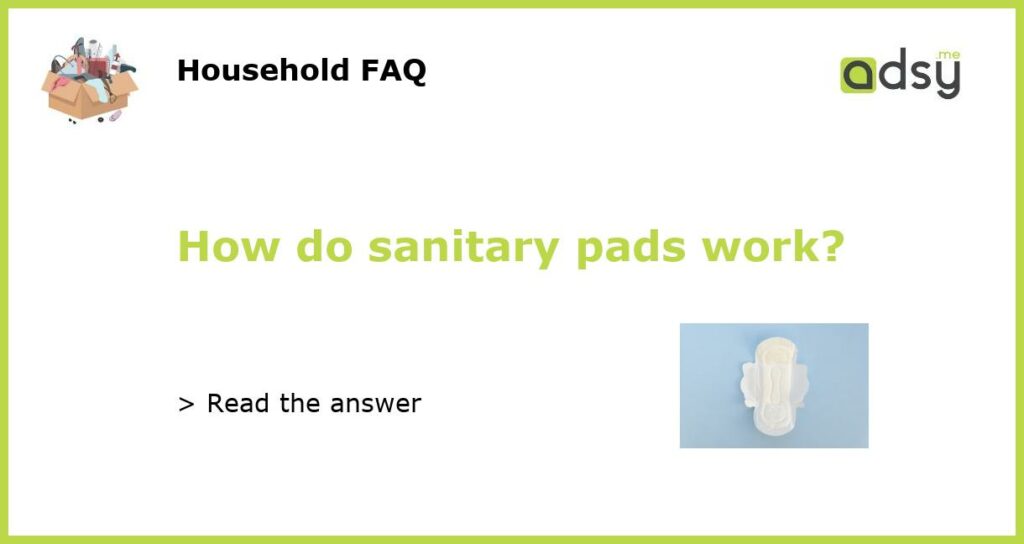How do sanitary pads work?
Sanitary pads are a common menstrual hygiene product used by women to manage their periods. These pads are designed to absorb menstrual blood and prevent it from leaking onto clothing or causing discomfort. But how exactly do they work?
Sanitary pads consist of several layers that work together to provide absorbency and comfort. The top layer is made of a soft material that feels comfortable against the skin. This layer is designed to allow the blood to pass through and be absorbed by the layers underneath.
Beneath the top layer is the absorbent core, which is usually made of wood pulp or a combination of wood pulp and superabsorbent polymers. These materials have the ability to absorb and hold a significant amount of liquid, preventing leakage and keeping the surface dry.
The bottom layer of the pad is typically made of a waterproof material to prevent any leakage onto clothing. This layer acts as a barrier between the absorbent core and the outer world, ensuring that the menstrual blood stays contained within the pad.
Different types and sizes of sanitary pads
Sanitary pads come in various types and sizes to cater to different needs and preferences. Some women prefer pads with wings, which are flaps on the sides of the pad that fold over the underwear to provide extra protection against leakage. Others prefer pads without wings for a more streamlined and comfortable fit.
The length and thickness of sanitary pads can also vary. There are regular-sized pads, which are suitable for most women with a moderate flow. There are also longer and thicker pads available for women with a heavier flow or for overnight use.
In addition to the standard pads, there are also ultra-thin pads for those who prefer a more discreet option. These thin pads provide a high level of absorbency while being almost invisible under clothing.
Some sanitary pads also come with features like odor control to help you feel fresh and confident during your period. These pads contain special ingredients that neutralize odors and keep you feeling comfortable throughout the day.
How to properly use sanitary pads
Using sanitary pads is fairly simple, but it’s essential to ensure proper placement and hygiene for maximum effectiveness.
Start by removing the pad from its packaging and unfolding it. Most pads have adhesive strips on the back that you can use to secure it to your underwear. Peel off the paper backing from the adhesive strips and press the pad firmly onto the crotch of your underwear. Make sure it is centered and covers the necessary area.
It’s important to change your pad every 4-6 hours or whenever it becomes saturated with blood. Leaving a pad on for too long can lead to irritation or infection. When removing the used pad, wrap it in toilet paper or the wrapper of the new pad and dispose of it in a proper waste bin. Do not flush it down the toilet, as it can cause plumbing issues.
Always wash your hands before and after changing your pad to maintain proper hygiene. If you’re in a public restroom and don’t have access to soap and water, use hand sanitizer or wet wipes.
Alternatives to sanitary pads
While sanitary pads are the most commonly used menstrual hygiene product, there are other options available as well.
One popular alternative is tampons. These are cylindrical-shaped products made of absorbent materials that are inserted into the vagina to absorb menstrual blood. Tampons are a good option for those who lead an active lifestyle or prefer not to feel the bulk of a pad.
Another alternative is menstrual cups. These are small, reusable cups made of medical-grade silicone that are inserted into the vagina to collect menstrual blood. Menstrual cups can be worn for up to 12 hours and need to be emptied, rinsed, and reinserted. They are an eco-friendly option and can last for several years.
If you’re looking for a more sustainable option, cloth pads or period underwear may be worth considering. Cloth pads are similar in design to disposable pads but are made of washable and reusable materials. Period underwear is specially designed underwear with built-in absorbency layers that can be washed and worn again.
Choosing the right sanitary pad for you
Choosing the right sanitary pad depends on various factors, including your flow, comfort preferences, and lifestyle.
If you have a lighter flow, regular-sized pads should be sufficient. For heavier flows, opt for longer and thicker pads or consider using tampons or menstrual cups for better absorbency.
Consider your lifestyle and activities when selecting a pad. If you’re active or participate in sports, pads with wings may provide better protection against leaks. If discretion is important to you, ultra-thin pads can offer a more invisible and comfortable fit.
It’s always a good idea to test different brands and sizes to find the one that suits you best. Pay attention to any potential skin irritation or discomfort and consult with your healthcare provider if you have any concerns.






